-
Posts
14,343 -
Joined
-
Last visited
-
Days Won
25
Content Type
Profiles
Forums
Blogs
Gallery
Events
Store
Posts posted by Ed_Haynes
-
-
Another. Although the Wehrmacht eagle was rarely worn and was resisted.
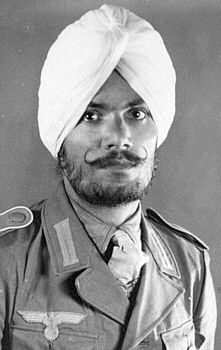
 0
0 -
These are images I have and I cannot always determine whence they have come -- I know they have come globally, biut I do not know the source-- mammoth apolgies if I trangress any rights of possession.

 0
0 -
This may be of some interest?
http://faculty.winthrop.edu/haynese/BBC-Bose.mp3
It is a large (25 Mb!) MP3 file. You have been warned.
BBC Radio 4, "Hitler's Secret Indian aAmy"
0 -
I've received this book and I highly recommend it. Great photos and descriptions of Canadian medals and orders.
It is a lovely piece of work, isn't it!
 0
0 -
Thanks, all. I appreciate all the experitse. About what I expected/feared. Shall be sharing this with him in a few days. Meanwhile, I put up another, on which I hope for some counterbalancing news, but I do fear . . . .
http://gmic.co.uk/index.php?showtopic=5928
Ed
0 -
Maker's mark (which make make sense to someone).

 0
0 -
The backside, back side, reverse, whatever . . . .
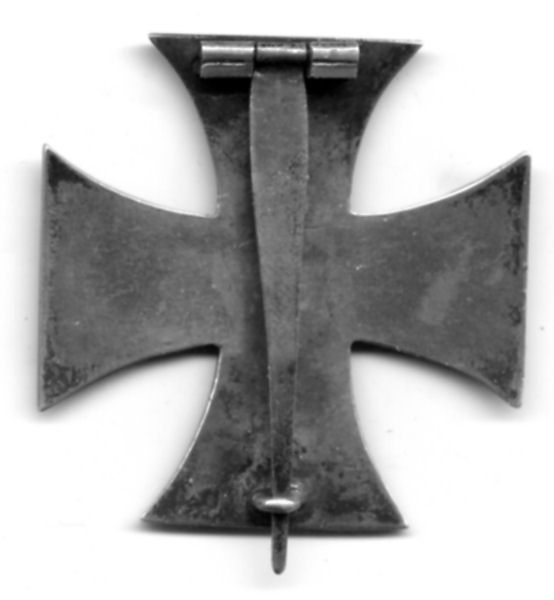
 0
0 -
I had asked for advice for a friend on another thread
http://gmic.co.uk/index.php?showtopic=5633
and, before I take him the bad news on that one, let me ask about another (in hopes that there'll be some good news when I see him next).
EK1 1870 comments??? If closeups are needed I can borrow it from him and re-scan. I know you compulsive folks look for detailed details.

 0
0 -
Sorry, I lied, one more, the certificate (blank) for the fairly common (and shown-by-Mike)
Syrian Arab Army Medal, 1962
Awarded to all members of the Syrian armed forces serving on 1 August 1962 to commemorate the twentieth anniversary of the foundation of the Syrian Arab Army on 1 August 1945 (or is it 1946?). In 1965, the award conditions were amended to include those who had served at any time between 1 August 1945 (1946?) and 1 August 1962 who returned to active duty between 8 March 1963 (the Ba?ath takeover) and 28 April 1965 (the date of the amending decree). These conditiosn would seem to make this a very widely awarded medal.
Established: By Legislative Decree No. 2648 of 13 September 1962, and amended by Legislative Decree No. 788 of 28 April 1965.
(This is a scan of a Xerox, as the original is FAR too large to fit on the scanner!)
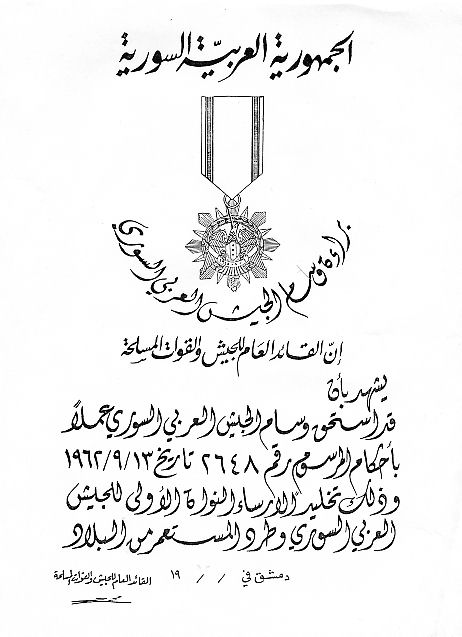
 1
1 -
Enough, more than enough, for now, I guess . . . ???

 0
0 -
Medal for the 40th Anniversary of the Syrian Military
Tentative identification.
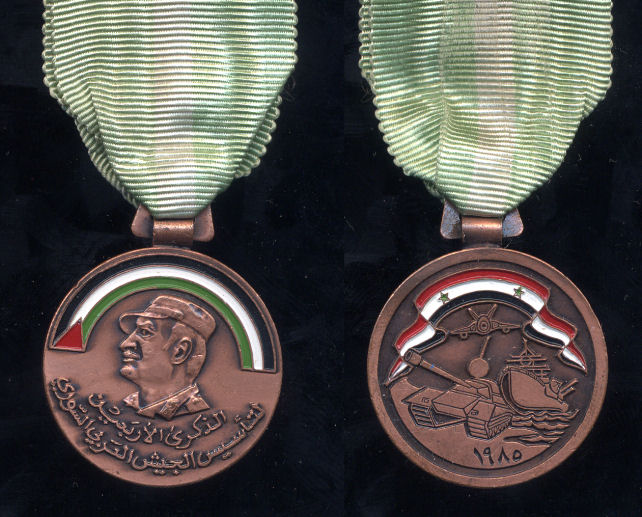
 1
1 -
Medal for the 25th Anniversary of the Ba?ath Party
Not much is known about this one, sorry.
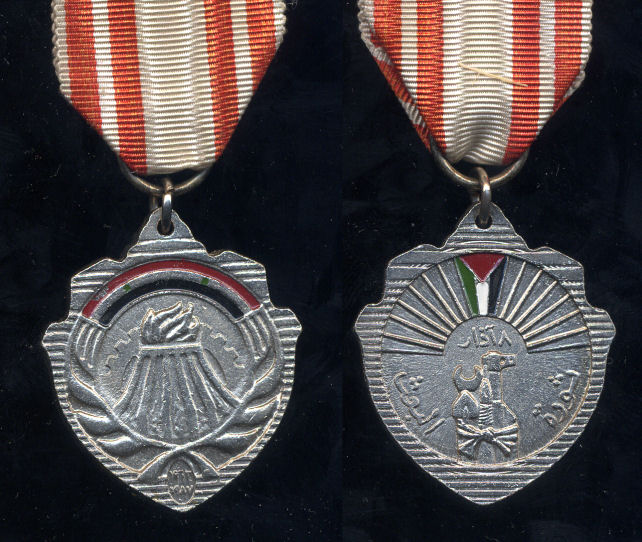
 1
1 -
Wisam Filistin al-Tazkari / Order of the Palestine Campaign
(Even though Mike has shown this one, I am showing it too -- it is common, more complex than we imagine, and very interesting.)
On 16 May 1948, one day after the united Arab declaration of war against Isarel, Syrian troops attacked across the Golan Heights. By 31 October, the Syrian war with Israel had ended unsuccessfully, as Syria had been forced back along most of their border with the Zionist state. Sporadic fighting continued until the armistice on 20 July 1949.
Awarded for valor and service in the battles in Palestine in 1948. The medal may be awarded to foreigners and can be awarded posthumnously. There is some indication that award may have been extended beyond the initial period of service ? for the 1948 war ? and that it may have become a generalized award for service against Israel?
This medal has also been referred to as the ?Palestine Medal?.
The lack of Syrian success in the war, coupled with the massive number (over 100,000) of Palestinian refugees who moved into Syria, became one of the factors which would, over the following decades, encourage military intervention in the Syrian government.
Established: By Legislative Decree No. 13 of 18 December 1951 and amended by Legislative Decree No. 9 of 19??.
This is seen with both the familiar red/black ribbon and with a red/white ribbon, whose significance is presently unknown.

 1
1 -
Wisam al-Tadrib / Medal of Training
Awarded to officers in command of a unit of at least company size which has achieved high ratings in training exercises over a period of at least one year. During this time, the recipient must have served actively with his unit and displayed a documented high standard of conduct and behavior. Subsequent awards are indicated by the addition of a bronze oak leaf to the ribbon.
This medal was also awarded to Saudi Arabian troops trained and deployed in Syria.
This medal has also been incorrectly associated with the Syrian Golan Heights campaign of 1973-74.
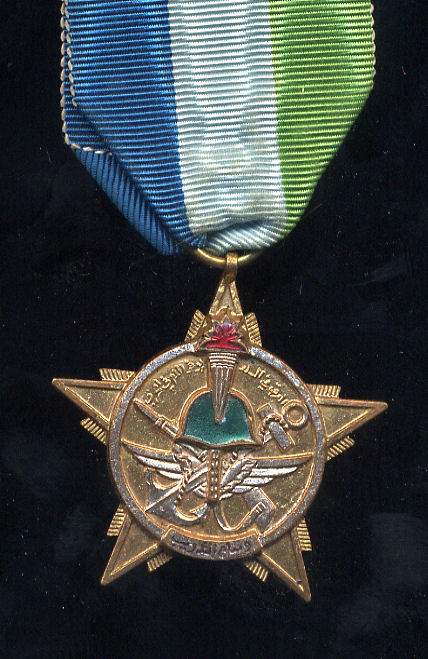
 1
1 -
Wisam al-Satahaqaq al-Suri / Order of Civil Merit
Awarded for service to the state and to wider Arab causes. In normal classes, a recipient begins in the lowest class and, over time, works their way un through the order by successive promotion, often after specified period of service in lower ranks of the award. The order may be presented posthumously.
This order represents a revision and modification of the earlier, French-created Honor Medal of Syrian Merit. On occasion, this order has been referred to as the ?Syrian Merit Medal?. This award is also known, quite unofficially, as the ?Order of the Arrows?.
The redesign of the earlier medal served to remove the overall design similiarity of the previous award to a ?Star of David? by reducing the number of points of the star from six to five and resulted in a complete redesign of the reverse.
Established: By Legislative Decree No. 153 of 25 June 1953. Known to have been manufactured by Arthus Bertrand (Paris, France).
Second class and forth class shown. Missed out on a lovely first class set recently


 1
1 -
Just as a footnote: An additional part of the problem with Syrian medals lies in the immense degree of French "influence" (1919-46) and with the question of the United Arab Republic (UAR), 1958-61 (was it "UAR", "Syria", or "Greater Egypt" -- no one at the time knew either!).
0 -
Not to hijack Mike's thread, but I'll add some of the more uncommon Syrian gongs.
Part of the problem is that most of the Syrian medals that come to the Western market (mainly via e$cam) are through a couple of Levantine (manly Beirut) sources that bring forward the same "set" of a half dozen medals with predictable regularity. This is complicated by the fact that most collectors view the legends as no more than "squiggles" (I have friends who say the same thing about English, by the way).
Will add some and hope that is OK with Mike
 0
0 -
No no! Long has it been thought that the American Southwest was the native range of the
jackalope
but NOW we know better!


No, no, Rick . . .
. . . from MONGOLIA, . . .
. . . not Jackalopeistan!
 0
0 -
Can anyone let me know the going rate for a 3rd class award in todays market?
thanks
andy
They can vary tremendously depending on type, serial number, era, etc. A Major New Jersey Dealer has singles in the range of $130-49. A Major Trustworthy New York Dealer (more in touch with reality) has them at $35.
PM me if you need names and URLs.
0 -
Well, I at least got to fondle that awe-inspiring set at an OMSA a couple of years back, when it last passed through his hands.
 0
0 -
Here are the three different specimens I have. As it seems they are crudely depicting the post-1991 Iraqi flag, I find it hard to accept that this has anything to do with Gulf War I (a.k.a. the Iran-Iraq War). Victory badge for Gulf War II?
My Main Medal Man in Baghdad seems to have disappeared 100% in the "liberation", so my documentary sources and evidence have been terminated.
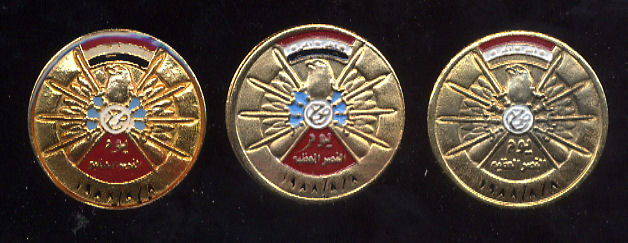
 0
0 -
For example, the suspension of my Order of Civil Merit, 4th class ("knight"). As I said, almost any Arab ODM made in France (as many are) will come that way.
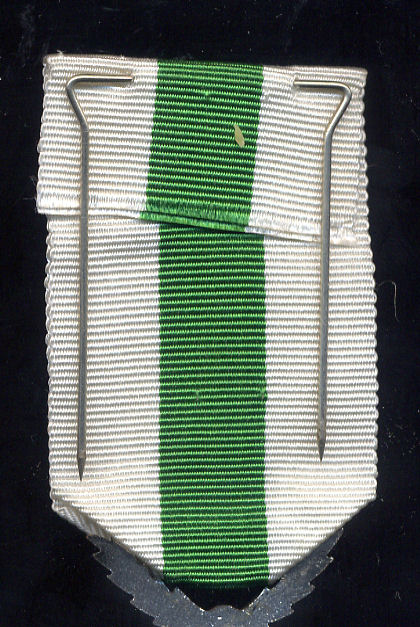
 1
1 -
Enough for now, should anyone wish details or more from her heap of paper, I can provide until these go back to the distant place where they live.
0 -
This one, at least, fits on the scanner.
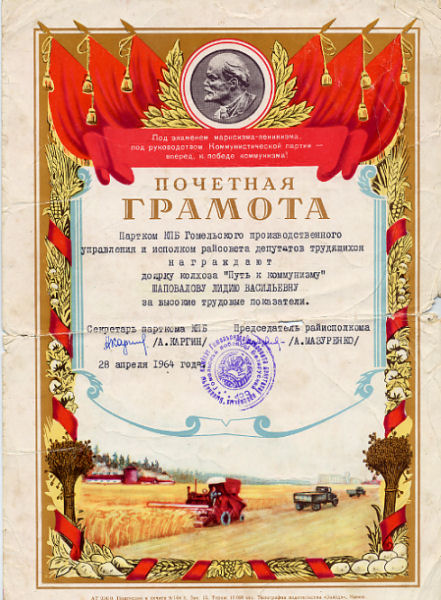
 0
0




Images of foreign volunteers in the Waffen SS
in Germany: Third Reich: Wehrmacht Medals, Decorations & Awards
Posted
The ONLY photo I have EVER seen that suggests that SS insigniae were ever worn. Again, and this is important to recall, those I have corresponded with and interviewed who were there suggest this NEVER took place. Very confusing, but 'tis late-war . . . .